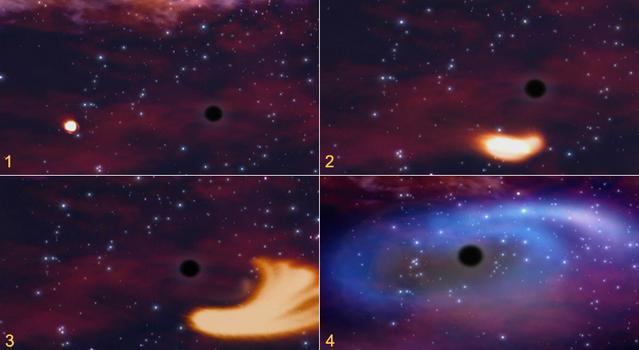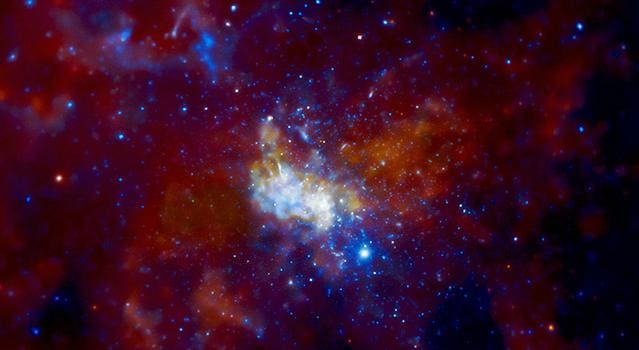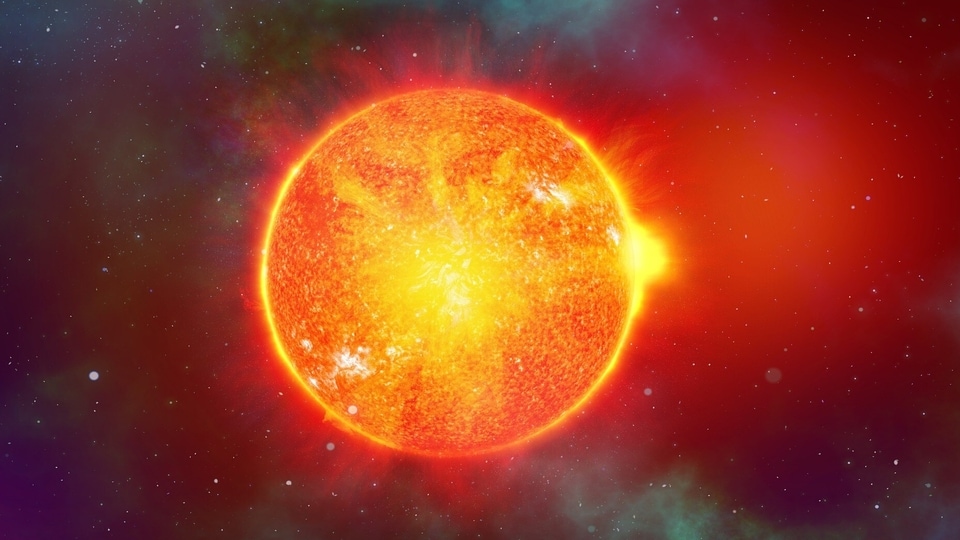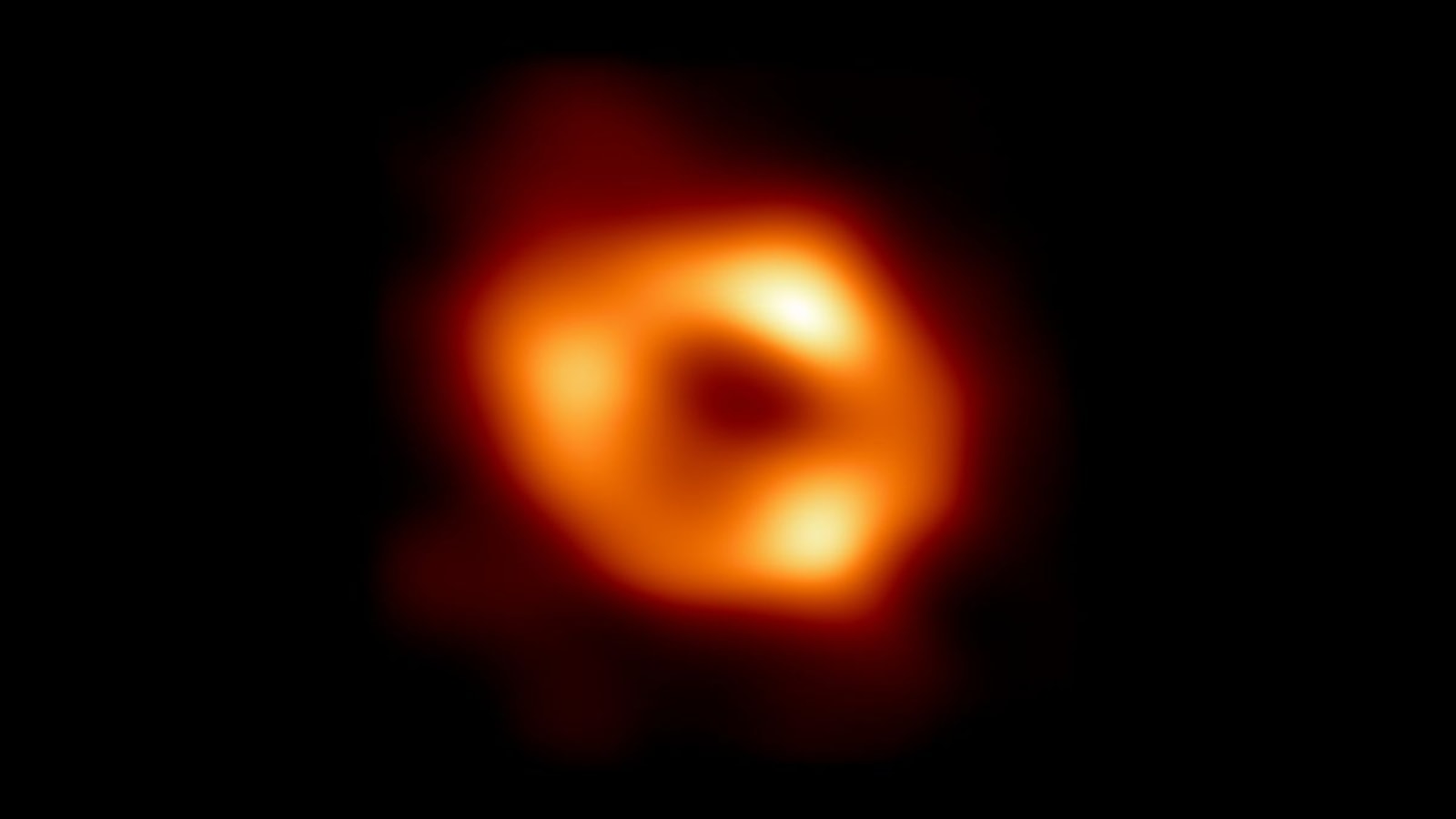Behind the Amazing Photo of the Milky Way Galaxy's Very Own Black Hole
Sagittarius A*, the supermassive black hole at the center of our galaxy, has fascinated cosmologists for years. Now we’ve got pics.






 View all Images
View all ImagesOne reason scientists are so fascinated with black holes is that they grab hold of the fabric of time and space, slowing time to a crawl as matter swirls toward a point of no return. The fact that black holes play tricks with time was what captured the imagination of Lia Medeiros, a postdoctoral fellow at the Institute for Advanced Study, and part of the team that used an array of eight telescopes to create the first image of matter swirling around the supermassive black hole at the center of the Milky Way.
She was still a high school student when she first read that black holes distort time — and decided to find a way to make studying them her life's work. Not only does time slow down near a supermassive black hole, but theoretically, inside it, time and space would somehow switch places. Efforts to understand black holes could lead scientists to a more encompassing understanding of the rest of our universe, and of its still-mysterious origin.
The ambitious black hole imaging project is called the Event Horizon Telescope because it's meant to peer as closely as possible at the boundary beyond which even light can't escape the black hole's gravitational pull. Eight telescopes positioned around the world work together to create each image. In 2019, the same team unveiled a similar bright doughnut of matter swirling around a much bigger but more distant supermassive black hole in the center of a galaxy called M87.
While both images took years of work and a team of more than 300 scientists, our own galaxy's black hole presented a bigger challenge. While the black hole itself has a mass equivalent to 4 million suns, the glowing donut in the image spans a relatively tiny region of space, smaller than the size of Mercury's orbit. It's also 27,000 light years away and shrouded in a thick haze of gas and dust. Medeiros said that to take their photo, they picked a particular wavelength in the radio spectrum that penetrated this thick wall of dust — similar to the way X-rays penetrate the human body.
As one of the theorists on the team, she helped figure out which wavelength would get them closest to the actual event horizon of the black hole, which is named Sagittarius A* because it's in the constellation Sagittarius, though it's vastly farther away than the other stars that make up the shape.
A mass of 4 million suns is mind-blowing, but this black hole is not a freak of nature. That appears to be typical of the hearts all but the tiniest galaxies. And yet nobody is quite sure when or how they formed.
That is, it's not known whether Sagittarius A* got so big by consuming 4 million stars, or whether it was born from a lump in the primordial matter of the universe, after which stars began to light up around it. Or perhaps black holes and galaxies take shape together. Our black hole is relatively quiet, which is why it was so hard to get a photograph of anything up close to it. Team member Feryal Ozel of the University of Arizona called it “our gentle giant.”
Other black holes, far away, are engaged in much more violent, visible activity. The action of stars getting ripped up and pulled into the event horizon creates light that shines at us from the far reaches of the cosmos, and gives us a glimpse back to an earlier phase in the evolution of the universe.
Our black hole is in a quiet phase right now, said Avi Loeb, a professor of astrophysics at Harvard. That's because it's consumed most of the material within its range. But it could burst into new activity when our galaxy merges with our neighbor, Andromeda, shaking things up and bringing new stars and matter close enough to be pulled inside. That won't happen for another several billion years.
Black holes, like the origin of the universe, are considered singularities because time and space become curved to infinity. When cosmologists talk about the Big Bang, they extrapolate our expanding universe backwards in time until everything becomes infinitely dense and space infinitely curved. The mass of the universe would get packed into an infinitely small pinpoint. But many physicists see this as a sign that what's really happening can only be described with laws of physics that are yet to be discovered.
It's at the Big Bang and in black holes that the laws of physics start to falter — their behavior can't be described by Einstein's relativity, which works at large scales, or quantum mechanics, which rules things on microscale.
While it's said that nature abhors a vacuum, Princeton University cosmologist James Peebles says physicists abhor singularities. “We hope the universe has a similar distaste,” said Peebles, who won a Nobel Prize in physics in 2019. When you extrapolate back in time, you start to calculate “arbitrarily high temperature, arbitrarily high space curvature … that's a bad thing, we think.”
Bad, that is, meaning that it means our laws of physics aren't complete. But good in that it leaves the door open for new theories that could be more revealing, more complete, and even useful to us here on Earth.
Catch all the Latest Tech News, Mobile News, Laptop News, Gaming news, Wearables News , How To News, also keep up with us on Whatsapp channel,Twitter, Facebook, Google News, and Instagram. For our latest videos, subscribe to our YouTube channel.































